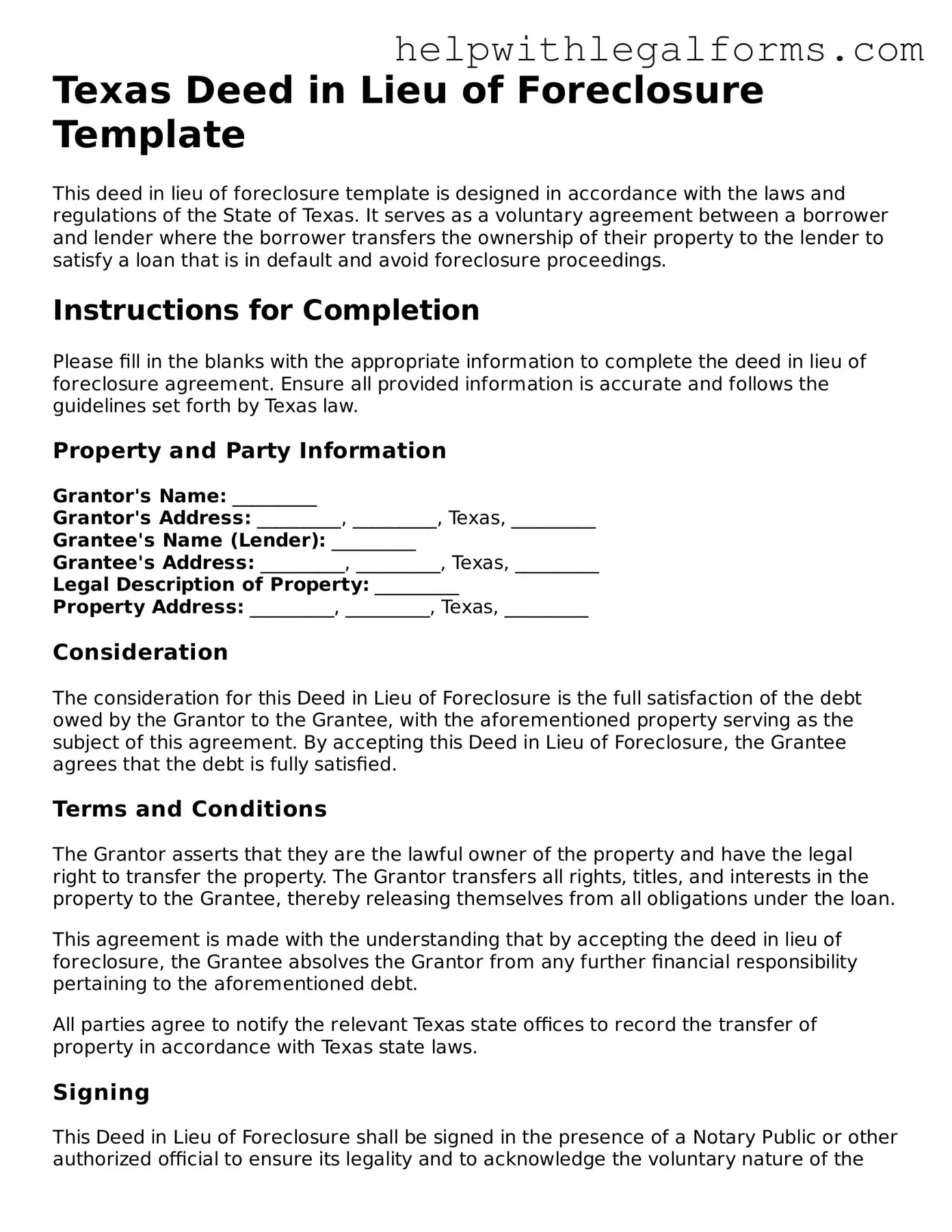Texas Deed in Lieu of Foreclosure Template
This deed in lieu of foreclosure template is designed in accordance with the laws and regulations of the State of Texas. It serves as a voluntary agreement between a borrower and lender where the borrower transfers the ownership of their property to the lender to satisfy a loan that is in default and avoid foreclosure proceedings.
Instructions for Completion
Please fill in the blanks with the appropriate information to complete the deed in lieu of foreclosure agreement. Ensure all provided information is accurate and follows the guidelines set forth by Texas law.
Property and Party Information
Grantor's Name: _________
Grantor's Address: _________, _________, Texas, _________
Grantee's Name (Lender): _________
Grantee's Address: _________, _________, Texas, _________
Legal Description of Property: _________
Property Address: _________, _________, Texas, _________
Consideration
The consideration for this Deed in Lieu of Foreclosure is the full satisfaction of the debt owed by the Grantor to the Grantee, with the aforementioned property serving as the subject of this agreement. By accepting this Deed in Lieu of Foreclosure, the Grantee agrees that the debt is fully satisfied.
Terms and Conditions
The Grantor asserts that they are the lawful owner of the property and have the legal right to transfer the property. The Grantor transfers all rights, titles, and interests in the property to the Grantee, thereby releasing themselves from all obligations under the loan.
This agreement is made with the understanding that by accepting the deed in lieu of foreclosure, the Grantee absolves the Grantor from any further financial responsibility pertaining to the aforementioned debt.
All parties agree to notify the relevant Texas state offices to record the transfer of property in accordance with Texas state laws.
Signing
This Deed in Lieu of Foreclosure shall be signed in the presence of a Notary Public or other authorized official to ensure its legality and to acknowledge the voluntary nature of the agreement.
Grantor's Signature: _________
Date: _________
Grantee's Signature: _________
Date: _________
Notary Public's Signature and Seal: _________
This document is to be filed with the county clerk's office where the property is located to ensure legal recognition and enforcement of this agreement.
